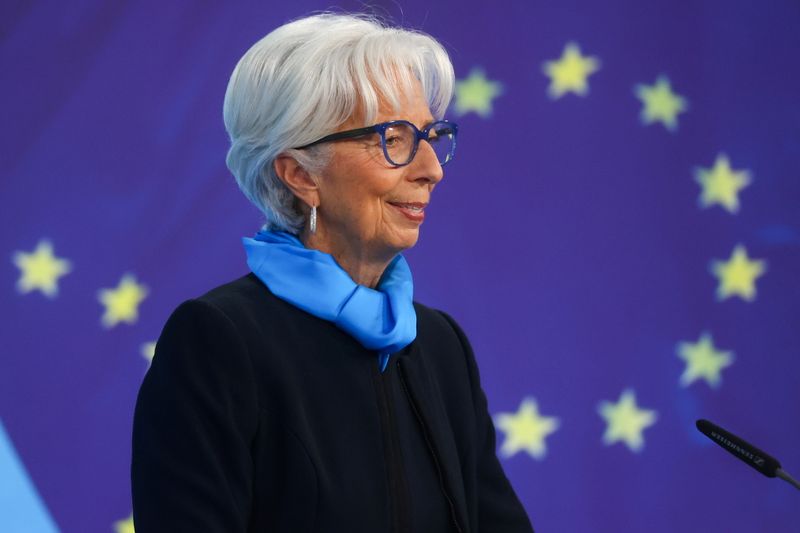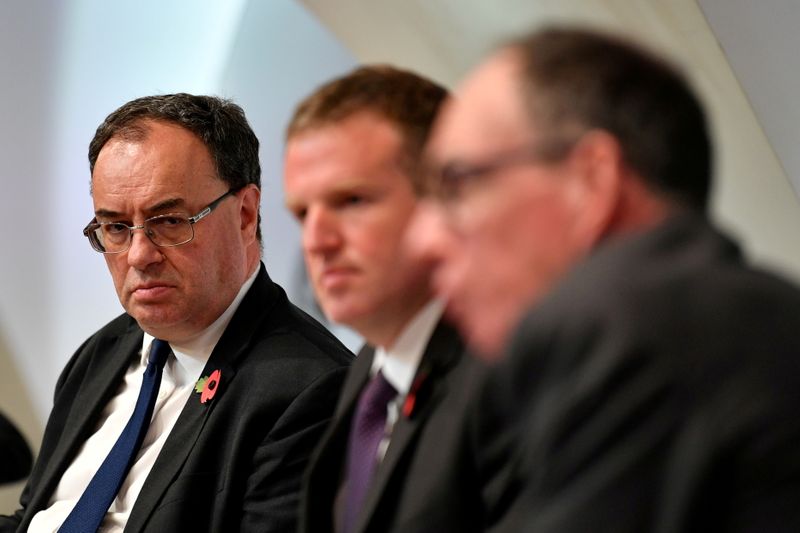(This December 6 story corrects date of BoE meeting to Nov.4 from Nov. 5 in second paragraph, no other changes to text.)
LONDON (Reuters) – Financial markets, which have struggled this year to decipher central bankers’ policy signals, face their biggest challenge yet in December when in the space of 24 hours the Federal Reserve, ECB and Bank of England hold crucial meetings.
These come at the end of a year that saw central banks generate frequent bouts of market turmoil, the most recent examples being the BoE’s shock “no change” decision on Nov. 4, October’s timid rate-hike pushback by the European Central Bank and the Reserve Bank of Australia’s failure to defend its bond yield target.
It is unsurprising then that a week or so before 2021’s final crop of meetings, measures of asset price volatility are shooting higher, with currency and bond vol gauges hitting the highest in months.
First up on Dec. 15, the Fed’s 1800 GMT statement may announce faster tapering of asset-purchases and could reveal its thinking on future rate rises.
The next day, the BoE meets, having in November kept rates on hold — at odds with market pricing.
Less than an hour later, the European Central Bank could announce plans for two key bond-buying programmes; implications could be big for highly indebted states like Italy.
Monetary policy messaging, by its very nature, is an inexact business. But unexpectedly sticky inflation, supply-chain threats to economic recovery and COVID’s constant background menace now make the outcomes especially hard to model.
“Whether it’s Madame Lagarde or Andrew Bailey or Jay Powell, the current circumstances are creating almost a perfect storm of challenge to central bank communication,” said Carl Tannenbaum, Northern Trust chief economist who worked at the Fed’s risk section during the 2008 financial crisis.
He hopes the meetings will yield a “much more candid and fulsome discussion” especially on labour markets and inflation.
Investors express sympathy for central bankers whose job walking the communication tightrope has been complicated further in recent years by markets’ huge clout, far greater than what the previous crop of central bankers had to contend with.
Global equities’ value is approaching $100 trillion, almost double pre-pandemic levels; government spending splurges have expanded bond markets. Trading at exalted valuations, the potential for setbacks is huge.
And the signalling impact resonates well beyond markets — so confident were British banks in a November rate hike, they had moved home loan costs higher before the BoE meeting.
What central bankers need to convey is straightforward — that they will provide necessary support in the short-run and price stability in the long-run. But in pumped-up markets, where sentiment turns on a dime, it’s harder than it looks.
It may prompt a rethink of signalling strategies; the BOE’s Bailey for instance even suggested returning to a no-guidance stance.
Richard Barwell, a former BoE economist who heads macro research at BNP Paribas Asset Management, says central banks would like to preserve the policy-tightening option but without committing to it.
“The challenge is to make the necessary change – and create that option – without destabilising markets by convincing them that the option is certain to be exercised,” he said.
UNRELIABLE BOYFRIENDS
Barwell said any bank proceeding with December policy tightening would need to explain the decision in light of the Omicron COVID variant. But the risk then is of markets pricing out future rate rises.
That’s especially a problem for BoE Governor Bailey, who according to Barwell, has a “Grand old Duke of York” problem, a reference to the English nursery rhyme describing a futile action.
“There may be a limit to the number of times policymakers can march the market up to the top of the rate hike hill only to march it back down again,” he added.
The UK media quickly dubbed Bailey “Unreliable Boyfriend No. 2”, updating a moniker applied to predecessor Mark Carney, whose policy signals sometimes failed to translate into action.
ECB chief Christine Lagarde too was criticized after her half-hearted rejection of rate rises priced for 2022 in late October boosted the euro and hurt bonds. But the moves reversed the following week when she forcefully rebutted rate hikes.
The Fed’s Jerome Powell seems to have garnered top marks, not least for his willingness to admit he didn’t have all the answers. But even his calm wavered recently; days after telling lawmakers Omicron could imperil economic recovery, he suggested it may be time to stop seeing inflation as transitory.
The dollar which had weakened, shot straight up again.
But Timothy Graf, State Street’s head of EMEA macro strategy, praised Powell for his “honesty and forthrightness”, drawing parallels with the candour of ex-ECB chief Mario Draghi, credited with steering the euro zone from its 2011-2012 crisis.
“The Fed is making a course correction from what was perceived earlier in the year, rightly or wrongly, as having a somewhat relaxed approach to the inflation question,” Graf said.
(Reporting by Dhara Ranasinghe and Sujata Rao; Editing by Toby Chopra)





























